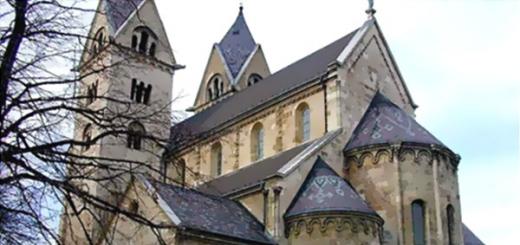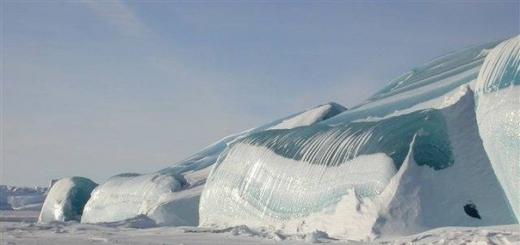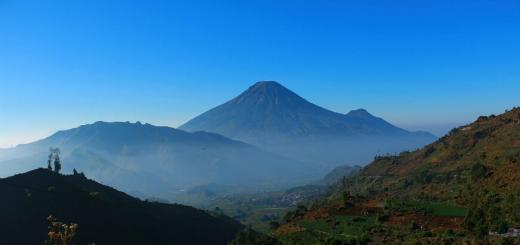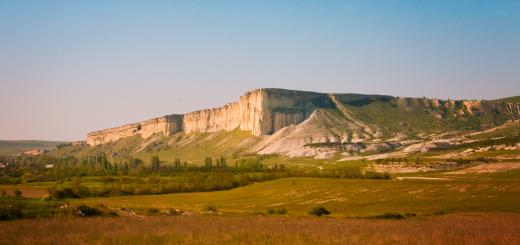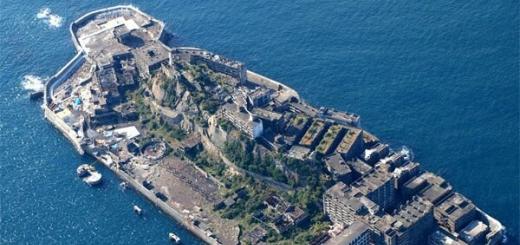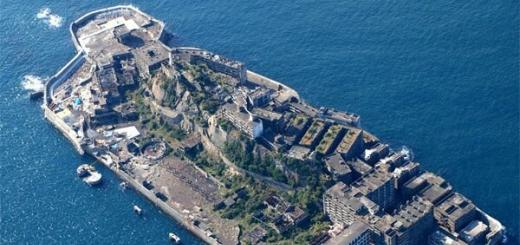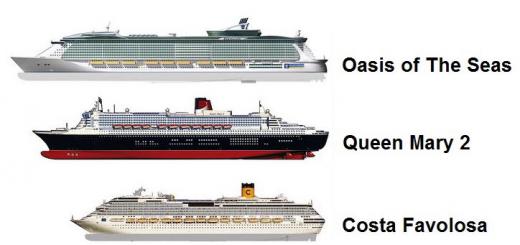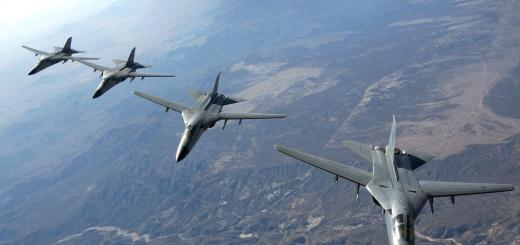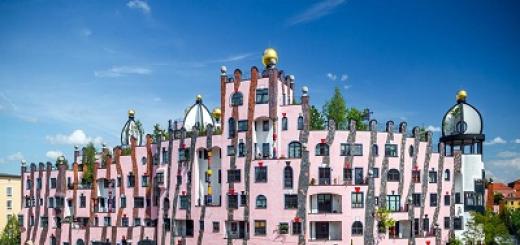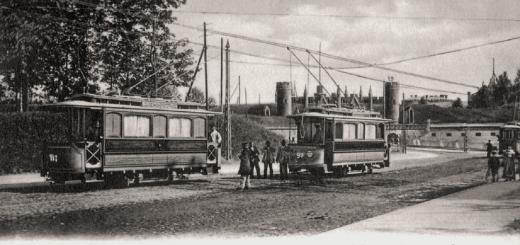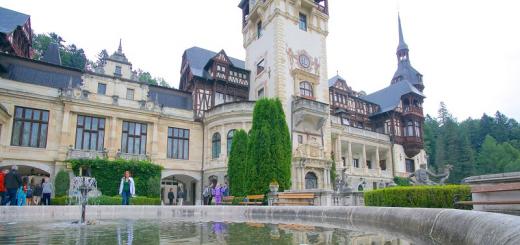Ring road number 1 in Iceland (from Reykjavik to Akureyri).
The most important road in Iceland is the ring road number 1, or in our opinion "KAD". It goes around the entire island, is entirely asphalted, mostly two-lane and is circular. There are almost no cars on it in May. Its length is 1339 km. Inland, secondary paths leave, which are only occasionally asphalt, more often good primers, less often bad primers. Bad primers in the fall-winter-spring happen to be closed. The ring road is passable and open all year round... Wherever you go in Iceland, part of the route anyway will go along road number 1 anyway.
In two days we drove from Reykjavik (number 1) to Egilstadir (number 5) along the northern part of the island.
The road number 1 itself can be considered as a separate attraction. Due to the fact that we were in such a tight time frame, we were able to see how Iceland differs at different ends of the island. Literally an hour's drive and green grass turns into black expanses, volcanic fields give way to tall white mountains, red earth turns poisonous yellow or neutral brown, waterfalls replace snow, and black sand turns into green grass and pastures.
On the first day on the ring road we drove about 400 km from Reykjavik to Akureyri. With all the stops, it took about 6 hours (cruises along the Golden Ring, which were on the same day, are not included here).
The ring road is picturesque, probably at any point. But, in my opinion, one of the most beautiful parts of it in the north-west of the island. On the right is a picturesque huge mountain range. And on the left, very close, the waves of the Atlantic Ocean run up in loud bursts! You can hear them even in the car, at full speed! The ocean sometimes turns out to be very, very close to the road.
Road number 1 is free except for one tunnel, and besides, it is the only one in Iceland.
It runs under the Hvalfjörður fjord. The length of the tunnel is 5 km 770 m. If you go along the fjord, the path will increase by about 50 km, in the tunnel there is a significant saving of time, but this pleasure is paid - 1000 Icelandic crowns (about 240 r). The depth of the tunnel is 165 meters below sea level. They write that the daily traffic already exceeds the permissible level, and a new tunnel is being designed to be built in the coming years. What was very surprising was the absence of gas pollution inside, although it was very noisy due to the hum of the fans.
And here is the fjord itself, which we just crossed under water.
Three kinds of animals graze in Iceland - cute northern horses, no less cute sheep, trimmed under a skirt in spring and ... geese. They also eat mostly them. Along almost the entire road, wire is stretched, which, in addition to being barbed, is also energized. This is not done to protect the land from people, but to protect people from walking animals. Everyone grazes in Iceland freely, without any supervision.
We cross another fjord, this time from above over the bridge.
If in Norway I did not dare to call cities villages, then in Iceland the situation is the opposite. The town of Borgarnes is a village by a village. :)))
Someone said or wrote that there are few trees in Iceland. Nonsense. They are not cut down there, but planted, so every year the forests grow and take over the island. :) Another thing is that volcanic eruptions very quickly nullify all efforts, turning green forests into black fields.
Very familiar to us, but very rare forest landscape in Iceland.
And here are just the consequences of a volcanic eruption. And it happened sooo long ago.
Sometimes the road rises high, and then the landscapes outside the window become much whiter and snowier.
The village of Blondyous.
From that moment on, I gave up completely, stupidly put the camera to the glass of the car and filmed, filmed, filmed ... sometimes rearranged the camera to the opposite glass. The result of the photographs did not even bother me, I wanted at least something to remain as a keepsake and allowed even after a long period of time to remember what we saw there ... By the end of the day, the head from everything around was literally exploding. :)
A few facts about Iceland.
The time difference with Moscow is 4 hours.
The air temperature on the island in winter rarely drops below 0, and in summer average temperature is only +10 degrees. During our stay in early May, she was about +7, which was very comfortable. The children really walked in winter clothes, and we put on a lot of sweaters.
The Arctic Circle is not far away, so the days are very long in spring and summer.
The main currency of Islanlia is the Icelandic krone. However, all shops accept euro cash without any problems. Also, without any problems, you can pay with a bank card everywhere, but it is still useful to have a small supply of cash with you. Bank cards are accepted even in taxis.
The country is in a prolonged crisis, but despite this, all possible conditions for comfortable travel have been created for tourists. Many Icelanders live at the expense of tourists, but at the same time, apart from words of gratitude for their work, nothing comes out. :)
In the north of the island, road number 1 is completely removed from the ocean and winds through a wide valley surrounded by mountains. The closer Akureyri is, the higher and higher the mountains become.
In the background there is a mountain with a characteristic silhouette - Hraundrangar.
Initially, we also planned an evening walk in Akureyri that day. A very nice city, but we arrived at it only around 8 pm, our strength was already running out. Let's run through it tomorrow, stopping today only to grab a snack. A good fellow in Subway on sweet Vanino "make a sandwich with a filling to your taste" put just as nicely so many hot peppers and hot onions that it was impossible to eat. Poor Temych ... how we scolded him and forced him to eat it without trying it ourselves ... We still happen to be evil, children must first believe, then check, and then according to circumstances ... :)
In total, we spent 15 hours on the road with a small inspection of Reykjavik, the Golden Ring and other small stops. Now it is a little terrifying, but somehow it went on and on. Something tells me that on our Russian potholes we would not ride so calmly. :) Good roads provide excellent travel opportunities! Even Seva was almost not capricious, and this despite the fact that he had a runny nose and a slight fever in the evening. Fatigue was felt only in the hotel. And our dad Vanya, of course, is a hero, yes ...! :))) But we couldn't see Iceland differently, but the desire was great! The next day promised to be quieter ...
This is not the end of my story about the ring road, because the next day we will continue our journey along it.
To be continued...
Facebook
Twitter
Google+
LinkedIn
Iceland seems to have been created for auto tourism, and you can take a jeep to any point where a dirt path leads. The most interesting in terms of driving is the center of the island (Highland). And at the same time, for those wishing to practice off-road there are no restrictions on visiting any part of the island. Nowhere are there any paid zones, paid attractions, paid parking near attractions, etc.
National roads
Roads belonging to the national highway system operated by Icelandic Roads. They are categorized as follows: S - Major roads - road # 1 that connects Reykjavik with Reykjavik T - Minor roads - tengivegi in translation - country roads (usually a two-digit number), usually more than 10 kilometers long H - Local roads, which provide access to private farms and do not correspond to the quality of tengivegi (usually a three-digit number) L - A road that does not belong to any of the above categories In short, there is nothing interesting here (in terms of driving! sightseeing after a comfortable ride in a good sedan.
Other roads
F - unpaved roads, on which only 4x4 are allowed. Many with elements of crossing rivers ford

F roads with two-digit numbers are better - there may be a smooth gravel road without extreme (Primary highland road); with three-digit numbers much more interesting; the dotted line without the Jeep Trail number. May be unpredictable enough.
Lovers more quiet rest attract attractions in a relatively comfortable zone on Ring Road No. 1 (Primary road). And for lovers of a real jeep trip outside the main road, where the Icelandic Highland is, the most interesting begins. First, a short drive on the side road, and finally the F-road begins. But these roads can be as tricky as they are interesting. So let's be more attentive here
Security
Some statistics: a total of 13 thousand kilometers in Iceland, only 2.5 of which are F-roads To travel on F-roads, even three-digit ones, no special training is required, but you need to master the basic skills with confidence. A good jeep, good rubber, an extra canister of fuel is enough and you can grab extra provisions…. If, after all, you took pictures for a long time, it got dark, and you are still in the mountains. The worst thing that can occur on these roads is: fords (during the warm season, when glaciers are melting, some rivers can be quite full-flowing), sharp stones, lack of gas stations. The ground is stable enough that it is unlikely to get stuck in quicksand. Here are the most terrible fords of all that we have come across. But the summer turned out to be cold ...  There is a fairly simple rule for crossing the fords according to Alexander www.rusring.net
There is a fairly simple rule for crossing the fords according to Alexander www.rusring.net
Rules for safe crossing of a ford (namely a ford - a specially marked place of intersection of a road with a water obstacle). 1. Wait for another car and check out the depth and route of movement. 2. If the depth is great or just scary - wait for the big car and ask to drag it to the other side. 🙂
Estimated opening times for some of the most popular roads
When going on such a trip, you need to check if the road is open on the resource www.vegagerdin.is or by phone 1777 Lakagígar (F206) - June 12 Fjallabaksleið nyrðri (Landmannalaugar, Eldgjá) (F208) - June 12 Landmannaleið, Landmannalaugar (F225) - 12 June Kjölur (Hveravellir) (F35) - June 11 Sprengisandur (F26) - June 27 Askja (F88) - June 20 Kverkfjöll (F902) - June 19 Uxahryggir (F52) - June 5 Kaldidalur (F550) - June 13

The magnification shows how many “discoverers” there were today, which can give both confidence and make you think. 
It would be nice to check the weather, so as not to ride in vain Weather condition and forecast Do not neglect the traffic signs! Because in Iceland the signs are established by precedent, so if the sign is there ... then it's on the case !! If there is a sign "falling meteorites" in the middle of an Icelandic field, be sure that this happened at least 1 time and the probability is high! 
If something happened

Coverage map of the mobile operator Siminn.is

smartphone app 112 Iceland
 Smartphone Owners May Feel More Protected As Icelandic Rescue Service (ICE-SAR) Announces Program Launch 112 Iceland(SOS Iceland) for tourists. The program allows you to both inform that you need help and regularly inform you about your location, which, if necessary, makes it easier to provide assistance. The program works steadily not only in networks with fast connections. A regular GSM connection is sufficient for work. You can download the program both on the safetravel.is website, and through the iPhone App Store and Google's Play Store for Android devices. In addition to the program, on the website of the rescue service, you can (and if you want to go into some hole and are not sure, but "really want to" you need to !!) leave a plan of your trip with an indication of the control time of return. In case of non-return, rescuers will check if something has happened. Also in the rescue service for only 25 euros per week you can get McMurdo FastFind - a satellite rescue "beacon" of the COSPAS-SARSAT system. A very useful and reliable thing, it works everywhere.
Smartphone Owners May Feel More Protected As Icelandic Rescue Service (ICE-SAR) Announces Program Launch 112 Iceland(SOS Iceland) for tourists. The program allows you to both inform that you need help and regularly inform you about your location, which, if necessary, makes it easier to provide assistance. The program works steadily not only in networks with fast connections. A regular GSM connection is sufficient for work. You can download the program both on the safetravel.is website, and through the iPhone App Store and Google's Play Store for Android devices. In addition to the program, on the website of the rescue service, you can (and if you want to go into some hole and are not sure, but "really want to" you need to !!) leave a plan of your trip with an indication of the control time of return. In case of non-return, rescuers will check if something has happened. Also in the rescue service for only 25 euros per week you can get McMurdo FastFind - a satellite rescue "beacon" of the COSPAS-SARSAT system. A very useful and reliable thing, it works everywhere.
"Iceland, why are you so big!" - this is how you start to think, going around it in a circle and getting to another planet every 15 minutes of the way. At the same time, every minute you struggle with the desire to stop the car, go out and watch the walk, climb, take pictures, touch.
This is the world's largest piece of incompletely solidified lava lying at the junction of two huge lithospheric plates. It consists of a simple set of components - stones, lava, black sand, water in all states of aggregation, a little moss, grass and three and a half sheep - but these components in an amazing way create landscapes that I have never met more diverse.
Iceland. Regions.
When planning a trip to Iceland, you definitely need to sit down and deal with its regions (I have been looking for this map for a long time, where the island is divided into regions that are convenient for the traveler to perceive):
 Traditionally, Iceland is divided into only 4 parts: Vestfirðingafjórðungur, Norðlendingafjórðungur, Austfirðingafjórðungur and Sunnlendingafjórðungur. Sorry:)
Traditionally, Iceland is divided into only 4 parts: Vestfirðingafjórðungur, Norðlendingafjórðungur, Austfirðingafjórðungur and Sunnlendingafjórðungur. Sorry:) - Southwest Iceland and Reykjavik. The most densely populated and most popular part of the city. I would extend this region on a map to the town of Vic at the southernmost tip of the island. Here are the most top sights (including those united in the Golden Ring) - National park Thingvellir, Blue Lagoon, Valley of Geysers, mind-blowing waterfalls, Reynisfjara Beach and so on.
 It is absolutely impossible to convey with one photo a certain “average” landscape of the region, they are infinitely diverse.
It is absolutely impossible to convey with one photo a certain “average” landscape of the region, they are infinitely diverse.  Gullfoss Falls - part of the Golden Circle
Gullfoss Falls - part of the Golden Circle  Skógafoss waterfall
Skógafoss waterfall Most of the tourists visiting Iceland do not leave this area, and numerous travel agencies will take you through most of the interesting places in an organized and handy manner. More serious guys go on a multi-day hiking trip to the colorful Landmannalaugar valley, ride jeeps to the Hekla volcano. Behind Vic, tourists end and travelers begin;)
- South Iceland, from Vic to Hofn. Most of the region is occupied by the Vatna glacier, along the southern edge of which Route No. 1 leads.
 Black Beach
Black Beach  In the city of Hofn. View of the Vatna glacier
In the city of Hofn. View of the Vatna glacier  Road east
Road east Several (hundreds) more stunning waterfalls, endless black valleys of the mouth of the glacial river Skeidara, lava fields overgrown with moss, ice lagoon Jokulsarlon.
- East Iceland... Fjords deeply cut into the island, long tunnels, plateaus blown by strong winds.

 Stunning landscapes are more likely to be admired from the car, there are practically no stops to make. Wild places even for Iceland. There is no bus service here, which makes it impossible to get around Iceland except by car.
Stunning landscapes are more likely to be admired from the car, there are practically no stops to make. Wild places even for Iceland. There is no bus service here, which makes it impossible to get around Iceland except by car. - North Iceland, in which it is worth highlighting Lake Meewout, within a radius of 50 km from which there are many interesting places - the Hverir valley, Krafla volcano, Dettifoss waterfall, Dimmuborgir lava field and many others.
 Lake Myvatn with pseudocraters
Lake Myvatn with pseudocraters  Geothermal area Namafjall
Geothermal area Namafjall  I am sure that if it were not for Mývatn, then 90% of tourists would not go further than South-West Iceland. Several bays protrude deep into the coast of the Arctic Ocean (!!), one of which hides the cool city of Akureyri, which we just fell in love with.
I am sure that if it were not for Mývatn, then 90% of tourists would not go further than South-West Iceland. Several bays protrude deep into the coast of the Arctic Ocean (!!), one of which hides the cool city of Akureyri, which we just fell in love with. - West Iceland with the Snйfellsnes peninsula, which seemed to me "Iceland in miniature", almost all natural areas that we saw in the rest of the island are so compactly located there.


 The variety of colors in winter Iceland is simply amazing
The variety of colors in winter Iceland is simply amazing Glacier, waterfalls, hundreds of variations of lava fields, snow-white peaks, Atlantic Ocean, Mount Kirkjufel.
- Western fjords which we sacrificed for a thorough exploration of the Snйfellsnes Peninsula. Moreover, the most important feature of this region is the nesting sites of birds, which can be seen only in summer.
 The photo shows the coast in West Iceland, so formally it is also the coast of one of the West Fjords.
The photo shows the coast in West Iceland, so formally it is also the coast of one of the West Fjords. Few tourists, long and not always paved roads, stunning headlands and steep coastline.
- Interior Areas islands, vast and deserted areas. Open space and distant galaxies! There are several trails available only in summer and only for good jeeps (there are no bridges, hundreds of rivers can only be forded), usually with a visit to the Askja volcano. Not for weekend tourists. In winter everything is closed and closed.
Roads
There are 3 types of roads:

Navigation
For navigation, I used a smartphone with the offline Sygic software installed on it, sometimes checking the online Waze applications and Google maps... There were no problems. I read that Garmin has good cards Iceland, and TomTom doesn't have them at all.
Of course, he constantly monitored the condition of the roads on road.is.
Walking routes superbly marked, full of information plates, diagrams, etc.  Only once did we get a little lost in the labyrinths of the lava fields of Dimmuborgir, which I was incredibly happy about - the electronic compass built into my watch came in handy for the first time!
Only once did we get a little lost in the labyrinths of the lava fields of Dimmuborgir, which I was incredibly happy about - the electronic compass built into my watch came in handy for the first time!
Car rental in Iceland
The options are as follows:
- real jeep like the Toyota Land Cruiser, which will travel on all types of roads, including gravel roads inland, and most importantly, overcome the fords. In this category you can include the incredibly passable, and therefore the popular baby Suzuki Jimny, and strong, but not quite real jeeps like the Suzuki Grand Vitara, which, as the experience of rental offices shows, will pass on any roads and pass all the fords. Let me remind you that off-road driving in Iceland is strictly prohibited!
- crossover like a Jeep Patriot / Dacia Duster or an all-wheel drive station wagon like the Subaru Forester. It will pass on all roads, but it's scary to meddle in the ford. We took the Jeep Patriot, and we didn’t regret it!
- ordinary passenger car, minivan for big company or even a budget runabout.
- campervan, which I wrote about in the previous article as a rather stupid option of residence, or a serious caravan ( House on wheels), which will easily drive around the entire island along the highway number 1.
As with most issues related to traveling to Iceland, the decision to travel in summer or winter will be decisive. Let me remind you that car rental in Iceland in winter it is twice cheaper, and the choice is undoubtedly wider. It is better to book in advance for the summer, and in the winter I calmly came to one of the rental offices in Reykjavik and chose what I wanted. My thoughts on rental are:

Rental offices are divided into three types:
- Large international distributors such as Hetz. The most expensive option. Arrived, took and drove off.
- Quite large offices like Geysir or our iceland4x4carrental. Almost always new cars are in excellent condition. Some specialize in certain types of vehicles, such as very evil jeeps or caravans. They will bring the car wherever you say.
- Cheap local offices, for example, the firm with the self-explanatory name Sad Cars. Inexpensive, but not at all new cars. As luck would have it, reviews on the Internet are often diametrically opposed.
Everything is complicated with insurance, so difficult that we did not take any :) The most complete insurance consists of four components:
- Gravel Protection - gravel insurance. An excellent thing, as we realized on the very first day, when literally the very first oncoming truck poured a hail of gravel over us, making dents on the fender and cracks on the windshield.
- Sand and Ash Protection - insurance in case of damage to the car by sand, ash and suddenly pebbles / gravel, but not flying out from under the wheels of another car, but in some other way damaging the car. It is not clear how to distinguish one case from another.
- Theft Protection - insurance in case of theft. The rental employee smiled embarrassedly when I asked about the likelihood of such a situation and about the statistics of thefts in island nation... As we later found out, locals sometimes don't even close their cars. This insurance can be given free of charge, sort of like a gift :)
- Super Collision Damage Waiver - reduction of the deductible from EUR 3,000 (!) To EUR 300 (approximate amounts) when paying for damage that is not covered by other types of insurance. Attention: it is impossible to insure damages received when overcoming water obstacles and when driving off-road!
As I already mentioned, we did not buy any additional insurance, and we received a lot of damage, but in the end we did not pay anything.  But all this is due to a combination of cleverly developed circumstances, the victory of East European arrogance over Icelandic equanimity and Australian cunning, which I will talk about later.
But all this is due to a combination of cleverly developed circumstances, the victory of East European arrogance over Icelandic equanimity and Australian cunning, which I will talk about later.

Olga Efimova, 33, lives in Moscow, works as a legal advisor, and also maintains two blogs - about music and travel. In May, I drove around Iceland with friends and shared with 34travel readers the prepared travel plan.
Why Iceland?
Because at least once in your life you had to look at the place where Bjork was born and raised. In addition, Iceland with woolen horses incessantly poured from the ribbons of friends and acquaintances, blue ice and Martian landscapes - and I decided to channel my envy towards them in a productive direction.

How to go?
It is better to take care of the plane tickets in advance, because Iceland is not at all the country to which people break into a week before the trip. I bought my FinnAir tickets in six months, they cost me $ 400 ( tickets from Vilnius with a transfer will cost about the same amount, however, you can buy a few weeks before the trip - 34travel). I had to fly with a change: the road from Moscow to Helsinki took a little more than an hour and a half, and from Helsinki to Keflavik (Reykjavik's main airport) it took another 1.5 hours. Such advance planning has only one drawback - flights can be postponed, so my flights have been shifted more than once in six months, but not more than an hour. Please also note that tickets during the high season, which runs from June to the end of September, may be more expensive.

How to get around Iceland?
The best way to get around Iceland in May (and not only) is with a rented car: regular buses do not go long distances yet, hitchhiking is unreliable, and it is too cold to ride a bike at this time.
So, we (and there were four of us) decided to rent a car. After studying the prices and rental conditions, I chose Autoeurope: we took a Suzuki Grand Vitara with a manual transmission (mechanics are traditionally cheaper). Renting a car for 10 days with minimum insurance cost us € 689 (approximately € 172 per person). By the way, Iceland is considered the most expensive country in Europe for the cost of car rental.
You can rent a car right at the airport. Alternatively, get from the airport to Reykjavik by shuttle, and take a car in the city. Shuttle tickets can be purchased in advance on the Flybus website.
You can save money on a car if you book it at least three weeks before the trip, grab your GPS (they charge extra money for it) and not drive on the roads (then you can take the minimum insurance). I also advise you to check the availability with the driver international rights, at least one year of experience and a spare driver in case of fatigue.



Roads in Iceland
The main thing to watch out for in Iceland if you decide to go by car is the condition of the roads. Moreover, the Icelanders have prudently created a whole resource dedicated to roads. Here you can find a complete road map with a designation of the type of coverage, find out which of the tracks are closed today, and even see the roads in real time using webcams.
In May, the weather and road conditions in Iceland are quite unpredictable, and the road that is still open today may be tightly closed tomorrow, so I highly recommend actively using these services.
As for the quality of the roads - the circular track No. 1 is paved with excellent asphalt (but not illuminated by lanterns: reflective poles along the edges of the road are used as lighting), while gravel roads and lava roads are a little harder and more unpleasant to drive, but all these are trifles. Gas stations are encountered along the entire route quite often, even in the middle of a complete nowhere there will certainly be a deserted gas station that accepts bank cards. Because progress!



How to dress and what to take with you to Iceland?
So, in addition to the obvious warm, windproof clothing and comfortable shoes, it is worth taking a swimsuit and swimming trunks with you - in Iceland, at every step there are hot pools, which is a sin not to swim in.
Planning to buy clothes on the spot is rather presumptuous: the dreams of buying an Icelandic sweater with deer, which I cherished before coming to Iceland, crashed about their prices (about 20,000 ISK, that is, about € 135), so it is also better to knit a sweater with deer in advance and bring with you.
To save more money, you can take a minimum of bed linen and a towel with you, because often you have to pay extra for them in places of residence.


Food
The food in Iceland is not very diverse: there is just a lot of fish. Most often, during the trip, we cooked ourselves, using the kitchens of hotels and hostels, and we went to cafes and restaurants about once every couple of days, so we spent an average of € 20 per person on food per day.
The most important thing to remember about food and drink in Iceland is that alcohol is quite expensive there, and it is usually sold in separate stores. But the most popular chain of alcoholic shops called Vinbudin can be found in almost every town.



Where to live in Iceland?
The two main options for finding budget accommodation in Iceland (besides booking.com) are:
1. World network of hostels called HiHostels. Here you can find very cheap places in hostels, perhaps the cheapest option is to take a room for 3-4 people if you are traveling with a company and are ready to spend the whole night with each other. The price of such a room ranges from € 25 to € 35 per night per person. In addition, you can buy a membership in the HiHostels club (when booking your first hostel or on the spot) and get a 10% discount on accommodation in all hostels of this chain.
2. Several farms, also united into a purely Icelandic Farmholidays network. Horses are grazed on almost every farm, and local livestock products are served for breakfast. Farm stays will be slightly more expensive than hostels, but are generally worth it.
In most cases, we lived in hostels of the HiHostels chain, a couple of times on Farmholidays farms and booked two more places through the traditional booking.com on the tips of friends who traveled to Iceland.



Route
The route of the trip has been repeatedly changed, several times redrawn in opposite directions, so I can safely call it hard-won. Meet: the result of many hours of effort, Iceland travel itinerary for 8 days.
In case you doubt your driving skills or do not want to drive around Iceland at such a fast pace, then the trip to the western fjords can be left for the next trip, driving exclusively along the ring road number 1, and the trip in the south of Iceland can be split into 2 days, after spending the night in Vika.
Time calculated Google maps, you can safely multiply by 1.3-1.5, since they do not take into account possible accidents on the roads, weather and other momentary details.

Money and other little things
Since Iceland is a developed and progressive country, you can do without cash here: bank cards are accepted everywhere, from gas stations in the middle of fucking nothing to tents next to waterfalls. But I recommend changing at least some money in order to look at the Icelandic little thing with the fish depicted on it.
We did not use any local connection, because two of the company had European SIM cards, but a preliminary survey showed that the cheapest way of communication in Iceland is the operator Siminn.


South of Iceland: what to do there?
When we got to Keflavik, we met a companion who was already waiting for us in a rental car, and went to Reykjavik, stopping on the way to the famous Blue Lagoon. Swimming in the Blue Lagoon is hardly worth it (then you come across much more suitable places for this, with fewer tourists and significantly cheaper), but you definitely need to look at it, because the place is really beautiful.
In Reykjavik, due to its capitalism, there are a lot of museums and taverns, which we did not go to, but walked along the embankment at sunset and visited the main church of the capital Hallgrimskirkja. Its tower, which can be reached by elevator for 800 CZK (€ 5.5), offers a classic view of Reykjavik with its colorful roofs.
South of Iceland is richest in tourist places, therefore, the trip to this part of the country was the most intense. The so-called Icelandic gold ring consisting of national park Thingvellir, the geyser valleys, the Gullfoss waterfall, the Seljalandsfoss waterfall (which you can walk around) and the Skogafoss waterfall (which can be viewed from above by climbing the stairs).
In almost every place from which it opens amazing view, there are benches with tables, so you always have the opportunity to have breakfast or drink something with a view, for example, of the volcano. Most of Iceland's beauties can be viewed for free, and next to tourist spots there will definitely be a coffee shop with friendly Icelanders. For example, near the Valley of Geysers there is a Geysir cafe, which sells excellent coffee, and pictures about the national Icelandic wrestling are hung on the walls - glima, according to the rules of which the fighters grab each other by the straps and throw them to the floor (extremely informative).
After Skogafoss, you can get to the southernmost point of Iceland - Cape Vik, where tourists usually stop for the first overnight trip and walk along the black sand beach.
We spent the night in Reykjavik in a triple room at the Reykjavik City Hostel (€ 21 per person), and the next night was at the Hof 1 Hotel, located between the Skaftafell Glacier and the Glacier Lagoon (a room for four cost us € 46.5 per person). It was from there on the second morning of the trip that we went to explore the eastern coast of Iceland.


East Iceland: Everything You Wanted to Know About Glaciers
Iceland is full of glaciers in eastern Iceland, and you should take advantage of it: for example, you can go on a tour of the famous Skaftafell glacier and see the places where Interstellar and Game of Thrones were filmed (excursions to the blue caves are conducted here in winter). You can choose a suitable tour and book it, for example, on the website of these guys Mountainguides. We have planned this excursion of medium difficulty, which started at 9 am and lasted for about 4 hours (about € 92 per person, including the rental of the necessary equipment).
That day we spent the night in the town of Seydisfjordur, which we had to get to in an evening blizzard through a mountain pass, but it was all worth spending the night in a former hospital building. Here we stayed again in a room for four in a hostel called Seydisfjordur (it cost us € 25 per person).


North of Iceland: Wonders of Lake Myvatn
You can safely take 2-3 days to visit Lake Myvatn and its environs, but we did not have them, so we examined all the beauties in a day and a half.
On the way to the lake, we turned in two places: the Detifoss waterfall and the Viti crater, and around Lake Mývatn itself there is a whole lot of entertainment: the fumaroles Namafjall (one of the most impressive places in Iceland, where the products of volcanoes in the form of gas beat right out of the ground) , the Hverfjall crater, on the edge of which you can stand, looking at the terrain from above, the Dimmuborgir lava park and hot pools under open air Myvatn Baths, which are nicer, less crowded and cheaper to swim in than in the Blue Lagoon (approximately € 25.5 per person).
If you are lucky with the weather, you can fly by airplane from the local airfield. The views from the plane are amazing, and you can read more about the tour on the website. The price of a 20-minute flight is € 105, but judging by the photos, every minute is worth it.
That night we stayed in two rooms, a triple and a double, at the Skutustadir farm, which is a 5-minute drive from Dimmuborgir (and spent € 43 on it).
The next day we drove through the second largest city of Iceland, Akureyri, on the way turning to one of the most impressive waterfalls in the country - Godafoss - in which, according to legend, the Icelanders drowned their pagan gods when they converted to Christianity. A good place have chosen.
The next overnight spot became our favorite: it was the Hofsstadir farm. Iceland's friendliest horses, homemade yoghurts for breakfast and stunning sunsets guaranteed. Two rooms for two cost us € 53 per person, as they say, shut up and take my money again.


West: seals and fjords
On the way to the western fjords, it is worth visiting Osar, where you can see fur seals (if you are lucky, you can see them very close), the town of Skagastrond, which houses one of the most cosmic churches in Iceland, the town of Broddanes and the Holmavik Witchcraft Museum.
In the western fjords, the most difficult and scenic road: the route to Bildadulur through Isafjordur was closed, so we had to drive along the southern part of the fjords and overcome at least 5 mountain passes per day. After driving a little further towards Isafjordur the next day, we found a hot pool, a small waterfall, and a herd of shy sheep, which looked like nobody's (but equipped with a dressing room). And then our way lay to Cape Latrabyarg, which is considered the largest habitat of puffins. Unfortunately, we did not see dead ends, but the road to the cape is worth all dead ends in the world: an abandoned rusting ship on the shore, a bloodless plane, inside which you can climb and sit in the pilot's seat, beaches from white sand and a cafe serving free coffee.
Get from the western fjords back to mainland you can take a ferry, the ferry goes from a place called Brjanslaekur to the town of Stykkisholmur. You can view prices and buy tickets ahead of time on the website. We spent all three nights in western Iceland in hostels of the same chain: a mini-cottage in Saeberg (€ 25 per person), and the main advantage of this hostel is an open-air hot bath, so don't forget a hat and beer; room for four at Bildadulur Hostel (€ 37 per person) and Grundarfjordur Hostel (€ 26 per person).
We spent the next day on the road to Reykjavik and in Snaefellsnes park, stopping in towns along the way and gawking at Icelandic churches in the form of (if the description is to be believed) salted cod, walking near the lighthouses and fooling around in the harsh Icelandic playground. In the park, of course, there was a cafe with excellent coffee and pastries, from which you could look at the ocean and leaf through books about Icelandic horses. Although they say that from the coast of this park you can see puffins and whales (but we were not lucky again).
Ring Road (Iceland)
Section of the ring road in the vicinity of Borgarfjordur
Ring road(il. Þjóðvegur 1 or Hringvegur) is the main transport artery of Iceland. The length of the road is 1339 km. Its construction was completed in 1974. The road is of great interest to tourists, as it connects almost everything populated places country.
Almost along its entire length, this road is two-lane. One strip in each direction. When she comes through big cities, the number of bands may increase. Most of the small bridges are single lane and made of wood and / or steel. Most of the road is asphalt, but there are gravel sections in the eastern part of the road.
Flux density is highly dependent on location. Near Reykjavik, there are 5,000-10,000 vehicles on the road, but in some areas fewer than 100 vehicles a day.
The road was completed in 1974, in honor of the 1100th anniversary of the settlement of the country. In 1974, Iceland's longest bridge over the Skeidara River in South Iceland was completed.
The road is popular among tourists, as it can be used to reach almost anywhere in the country and often open from it. good views to the nature around. The route was especially popular with Icelandic families in the summer, but recently it has also attracted foreigners who rent a car or bring their own by ferry to Seydisfjordur. The southern part of the road sometimes collapses due to flash floods caused by geothermal springs or volcanic eruptions.
Driving on the Ring Road
Although most of the road is paved, some sections have not changed since the 1940s and are dangerous with their blind bends and narrow bridges. In winter, ice and strong winds can make the trip especially dangerous.
Permitted speed on the Road is 90 km / h on asphalt and 80 km / h on gravel.
List of cities on the Ring Road
- Grundarhwerfy
- Bifrest
- Reykjahlid
- Breiddalsvik
- Djupivogur
- Kirkupayarkleisture
- Skögar
- Hella
- Hveragerdi
Wikimedia Foundation. 2010.
See what "Ring Road (Iceland)" is in other dictionaries:
Ring Road: Main Ring Road (Washington) Ring Road (Iceland) Great Ring Road (Kiev) Ring Road ( Leningrad region) Lipetsk ring road High-speed magnetic ring road ... ... Wikipedia
Ring road: Main ring road (Washington DC) Ring road (Iceland) Big Ring road (Kiev) Ring road (Leningrad region) Lipetsk ring road High-speed magnetic ring road ... ... Wikipedia
Ring road: Main ring road (Washington DC) Ring road (Iceland) Big Ring road (Kiev) Ring road (Leningrad region) Lipetsk ring road High-speed magnetic ring road ... ... Wikipedia

